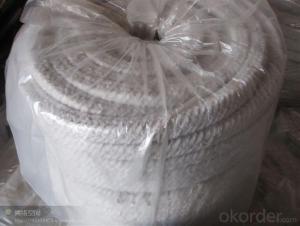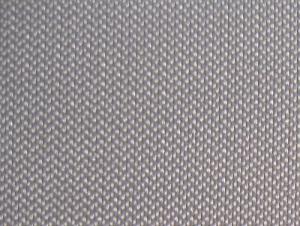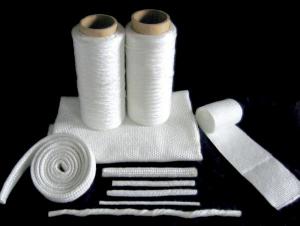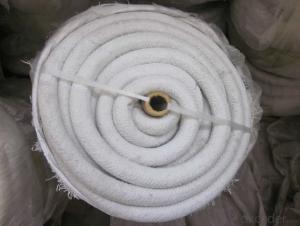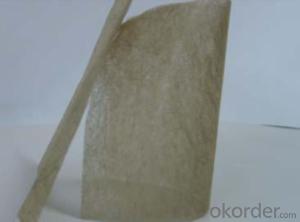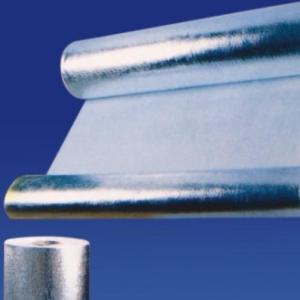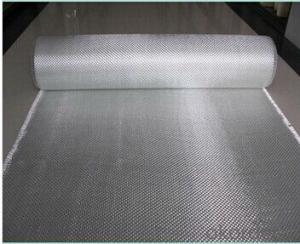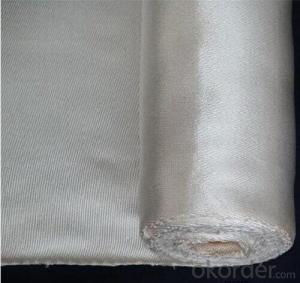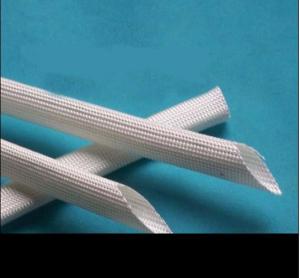ceramic fiber textiles for refractory
- Loading Port:
- Shanghai
- Payment Terms:
- TT OR LC
- Min Order Qty:
- 10 m.t.
- Supply Capability:
- 100 m.t./month
OKorder Service Pledge
OKorder Financial Service
You Might Also Like
Quick Details
| Place of Origin: | (Mainland) | Application: | Refractory | Model Number: | LBR11110904 |
| Brand Name: | Color: | pure white | Working Temperature: | 1100-1350 | |
| Grade: | ST(STANDARD) | Length: | 30000mm | Density: | 500kg/m3 |
| Width: | 10-150mm | Thickness: | 2-10mm | Fiber diameter: | 3um |
Packaging & Delivery
| Packaging Detail: | Wrapped by plastic bag inside,protected by carton box outside. |
| Delivery Detail: | 15 days after deposit |
Specifications
Ceramic Fiber Tape:
1.Glass-fiber reinforced;
2.Environmental-Friendly;
3.Easy to use;
4.Harmless to human.
Characteristics
Good compression strength.
Non-toxicity, environmental protection.
Low thermal conductivity and low thermal capacity.
Good antacid oil resistance and water vapor resistance.
Ceramic Fiber Textile
The Product Description
Ceramic fiber textile includes Ceramic fiber cloth, strap, twisted rope,
round straided rope and square straided rope.All are made from our high quality
ceramic fiber material. They can be used for high temperature applications up to
2300°F. The rope is reinforced with fiberglass filament, and optional Inconel/alloy
steel wire. Ceramic fiber textiles (cloth, tape and rope) contain a certain amount
of binder material which is normally burned at lower temperature and does not affect
the insulation property.
The three different styles are designed to fit different application needs: twisted rope
is a soft rope, while square and round braid are more dense .
Application
Common applications :door seals or caulking for ovens, furnaces and boilers,
expansion joints, cable or pipe wrapping, high temperature seals or gaskets.
widely used in welding, foundry works, aluminum and steel mills, boiler insulation
and seal, exhaust systems, shipyards, refineries, power plants and chemical plants.
We also provide many other refractory and insulation materials, so if you have demands
about them, pls contact us.
Technical data
Item | Cloth | Tape | Round rope | Square rope | Twisted Rope(Yarn) | Twisted rope(wool top) |
Classification Temp °C | 1260 | |||||
Bulk Density kg/m3 | 500±30 | |||||
Organic Content | ≤15 | |||||
Working Temp | 450(Glassfiber Filament) | |||||
1000(Metal Wire ) | ||||||
Loss After Firing(800°C)% | 12±2 | 12±2 | 12±2 | 12±2 | 12±2 | 8-10 |
Size | 30mx1mx2 30mx1mx3 | widen10-120mm length30m | Φ6-50mm
| 20x20 | Φ6-50mm
| Φ6-50mm
|
Any question,pls feel to contact us!
- Q:Can glass fiber textile be used in antennas?
- Glass fiber textiles are indeed applicable for antennas. Their superior electrical properties, including a low dielectric constant and loss tangent, make them well-suited for antenna usage. Moreover, their remarkable strength-to-weight ratio ensures their durability and lightweight nature for outdoor applications. These textiles can serve as structural supports, radome materials, or even function as the antenna itself. They offer excellent mechanical stability and are capable of withstanding extreme temperatures and moisture. Furthermore, glass fiber textiles can be easily shaped and molded into diverse antenna designs, enabling flexibility and optimal performance.
- Q:How does glass fiber textile compare to other textile materials?
- Glass fiber textile is known for its exceptional strength, durability, and heat resistance, making it superior to many other textile materials. Unlike natural fibers like cotton or silk, glass fiber textile does not shrink or stretch, making it ideal for applications that require dimensional stability. Additionally, glass fiber textile is highly resistant to chemicals, moisture, and UV radiation, making it suitable for outdoor use. Overall, glass fiber textile outperforms other materials in terms of strength, durability, and resistance to various environmental factors.
- Q:Can glass fiber textiles be used in reinforcement of Kevlar fibers?
- Yes, glass fiber textiles can be used in the reinforcement of Kevlar fibers. Glass fibers are known for their high strength and stiffness, making them suitable for reinforcing other materials. When combined with Kevlar fibers, which have excellent tensile strength and impact resistance, the resulting composite can have enhanced mechanical properties. The glass fibers can provide additional strength and rigidity to the Kevlar fibers, increasing their overall performance in applications such as ballistic protection, aerospace, automotive, and sporting goods. However, it is important to consider the specific requirements and compatibility of the materials, as well as the manufacturing process, to ensure optimal performance and adhesion between the two fiber types.
- Q:Can glass fiber textiles be used in reinforcement of adhesives?
- Glass fiber textiles have the ability to strengthen adhesives. These textiles are well-known for their strength and stiffness, making them an ideal choice for improving the mechanical properties of adhesives. By adding glass fiber textiles to adhesives, the tensile and flexural strength, impact resistance, and overall durability of the adhesive joint can be enhanced. The glass fibers serve as reinforcement by evenly distributing stress across the adhesive, preventing cracks and increasing the load-bearing capacity. Furthermore, glass fiber textiles can improve the dimensional stability and thermal resistance of the adhesive, allowing for a wider range of applications. However, it is crucial to consider the compatibility between the glass fibers and the adhesive matrix, as well as the proper handling and dispersion of the fibers, to ensure optimal reinforcement effectiveness.
- Q:Can glass fiber textiles be used in 3D printing?
- Glass fiber textiles have the potential to be utilized in 3D printing. To enhance the mechanical properties of the printed objects, glass fiber reinforced materials are frequently employed in additive manufacturing processes. By incorporating glass fiber textiles into the printing material, the strength, stiffness, and heat resistance of the printed parts can be augmented. Consequently, these materials are well-suited for applications necessitating durability and high strength, including automotive parts, aerospace components, and industrial machinery. It is worth noting, however, that the utilization of glass fiber textiles in 3D printing might entail specific alterations to the printing process, such as employing larger nozzles and adjusting the printing parameters to accommodate the fibers.
- Q:How does glass fiber textile perform in terms of humidity resistance?
- Glass fiber textile performs exceptionally well in terms of humidity resistance. Due to its inorganic nature, it does not absorb moisture, making it highly resistant to the effects of high humidity. This attribute ensures that glass fiber textile maintains its strength, durability, and shape even in humid conditions, making it an ideal choice for various applications, including outdoor and moisture-prone environments.
- Q:What is the cost of glass fiber textiles compared to other materials?
- The cost of glass fiber textiles compared to other materials can vary depending on several factors. Generally, glass fiber textiles tend to be more expensive than some natural fibers such as cotton or wool. However, they are often more affordable than high-performance synthetic fibers like carbon fiber or aramid (Kevlar). Glass fiber textiles offer excellent strength and durability, making them suitable for a wide range of applications including construction, automotive, aerospace, and marine industries. Their ability to resist harsh environmental conditions, chemicals, and fire also adds to their value. While the upfront cost of glass fiber textiles may be higher, their long lifespan and low maintenance requirements can offset this initial investment. Additionally, the cost-effectiveness of glass fiber textiles can be further enhanced by their lightweight nature, which can reduce transportation costs and improve fuel efficiency. It is worth noting that the cost of glass fiber textiles can also be influenced by factors such as production techniques, quality standards, and the specific requirements of the project. Therefore, it is advisable to consider the specific needs and budget constraints when comparing the cost of glass fiber textiles to other materials.
- Q:Can glass fiber textiles be used for making bags or luggage?
- Yes, glass fiber textiles can be used for making bags or luggage. Glass fiber textiles are lightweight, durable, and have high tensile strength, making them suitable for carrying heavy items. Additionally, they offer good resistance to wear and tear, making them an ideal choice for bags or luggage that need to withstand rough handling and frequent use.
- Q:Are glass fiber textiles resistant to stretching over time?
- Yes, glass fiber textiles are generally resistant to stretching over time. Glass fibers are known for their high tensile strength and durability, which allows them to maintain their shape and integrity even under prolonged stress or tension. Unlike natural fibers, such as cotton or wool, glass fiber textiles do not easily stretch or elongate over time. This characteristic makes them highly suitable for applications where dimensional stability is crucial, such as in the construction of reinforced concrete, composite materials, or high-performance fabrics. Additionally, glass fibers are also resistant to moisture, chemicals, and UV radiation, further enhancing their resistance to stretching or degradation over time.
- Q:Can glass fiber textiles be used in military applications?
- Yes, glass fiber textiles can be used in military applications. Glass fiber textiles are known for their high strength and durability, making them suitable for various military uses. They can be used in the manufacturing of military uniforms, bulletproof vests, and other protective gear. Glass fiber textiles can provide excellent resistance to heat, flame, and chemicals, which is crucial in military environments. Additionally, glass fiber textiles can be used in the construction of military tents, camouflage nets, and other textile structures. Overall, glass fiber textiles offer numerous benefits and can be effectively utilized in various military applications.
1. Manufacturer Overview |
|
|---|---|
| Location | |
| Year Established | |
| Annual Output Value | |
| Main Markets | |
| Company Certifications | |
2. Manufacturer Certificates |
|
|---|---|
| a) Certification Name | |
| Range | |
| Reference | |
| Validity Period | |
3. Manufacturer Capability |
|
|---|---|
| a)Trade Capacity | |
| Nearest Port | |
| Export Percentage | |
| No.of Employees in Trade Department | |
| Language Spoken: | |
| b)Factory Information | |
| Factory Size: | |
| No. of Production Lines | |
| Contract Manufacturing | |
| Product Price Range | |
Send your message to us
ceramic fiber textiles for refractory
- Loading Port:
- Shanghai
- Payment Terms:
- TT OR LC
- Min Order Qty:
- 10 m.t.
- Supply Capability:
- 100 m.t./month
OKorder Service Pledge
OKorder Financial Service
Similar products
New products
Hot products
Related keywords
